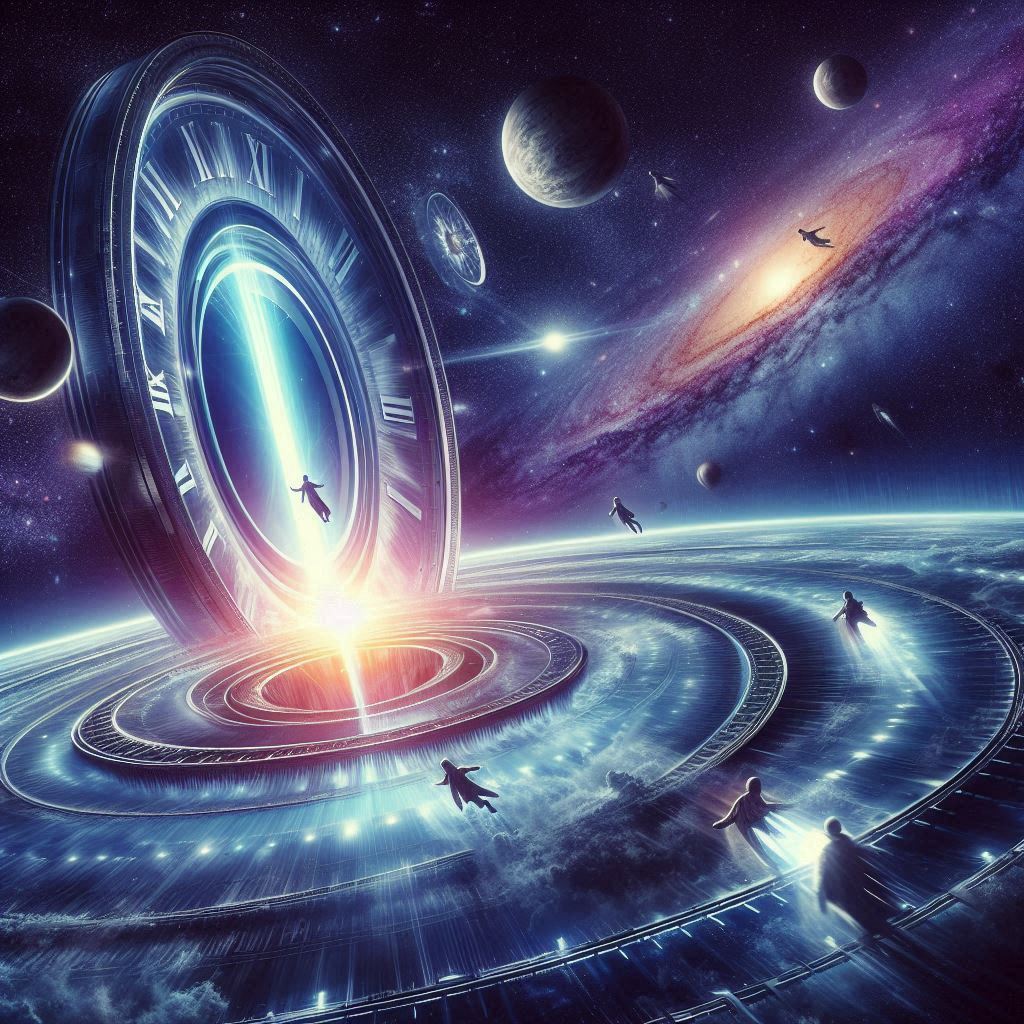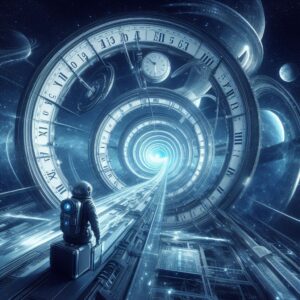
Time Dilation in Space Travel: The Surprising Reality That Could Change Humanity Forever
Time dilation in space travel is not just a idea ripped from science fiction—it’s a scientifically established phenomenon with a purpose to deeply influence the destiny of space exploration and probably the fate of humanity itself. Rooted in Einstein’s theory of relativity, time dilation refers to the distinction in elapsed time as measured by means of observers, considered one of whom is moving relative to the opposite. In area tour, this means astronauts on high-pace voyages experience time differently than people on Earth.
In this complete guide, we dive deep into the physics, implications, and real-international applications of Time dilation in space travel. Whether you are a area fanatic or a budding physicist, this text presents actionable insights and practical knowledge tailor-made to various degrees of information.
 Understanding Time Dilation in Space Travel
Understanding Time Dilation in Space Travel
At its core, time dilation is a manifestation of the special concept of relativity. When a spacecraft strategies the velocity of light, time onboard moves slower relative to someone on Earth. This would not imply the astronauts sense anything unusual; their clocks tick normally from their perspective. However, once they go back, they’ll find that more time has surpassed on Earth than they experienced.
“Time dilation isn’t only a concept test—it’s a measurable, examined truth,” says Dr. Brian Greene, theoretical physicist and author of The Elegant Universe.
The Science Behind It
- Einstein’s Special Relativity: Time is relative and connected to hurry.
- Gravitational Time Dilation: Clocks in stronger gravitational fields tick slower.
- Velocity-Based Dilation: The quicker you tour, the slower time moves for you relative to a desk bound observer.
Real-Life Examples of Time Dilation
GPS Satellites
GPS satellites orbit Earth at excessive speeds and excessive altitudes, where both special and widespread relativity come into play. Engineers ought to account for time dilation in space travel to make sure GPS accuracy.
Twin Paradox
The classic thought experiment in physics: one twin travels into space at near-light speeds while the other remains on Earth. Upon returning, the spacefaring twin is younger than their Earth-bound sibling.
Particle Accelerators
Muons created in the upper atmosphere live longer when moving at near-light speeds—this extension in lifespan is due to time dilation.
Time Dilation and Space Missions
Short-Term Missions
For missions like those to the International Space Station (ISS), time dilation is minimal—just milliseconds. However, it is still factored into precise calculations.
Long-Distance Travel
As we aim to travel to Mars or even other star systems, time dilation becomes more pronounced. At speeds approaching light, astronauts could age significantly less than people on Earth during the mission.
 Table: Time Dilation Effects Based on Speed
Table: Time Dilation Effects Based on Speed
| Speed (% of Light) | Time Experienced by Traveler | Time Passed on Earth | Relativistic Effects |
|---|---|---|---|
| 0% (Stationary) | 1 year | 1 year | None |
| 10% | 1 year | ~1.005 years | Minimal |
| 50% | 1 year | ~1.15 years | Noticeable |
| 90% | 1 year | ~2.3 years | Significant |
| 99.9% | 1 year | ~22 years | Extreme |
Actionable Insights for Space Agencies and Researchers
1. Design Missions with Relativity in Mind
Engineers must continue integrating relativistic calculations into mission planning, especially for deep space travel.
2. Advance Propulsion Systems
To experience substantial Time dilation in space travel, we must achieve higher velocities. This demands innovation in propulsion—ion drives, nuclear propulsion, and even theoretical warp drives.
3. Prepare for Psychological and Social Impacts
Long missions with significant time differences could have psychological effects on astronauts returning to an Earth that has aged far more than they have. Strategies for mental health and reintegration must be developed.
4. Consider Communication Lags
Beyond Time dilation in space travel, relativistic travel introduces communication challenges. AI may need to operate independently for real-time decisions.
“Understanding time dilation isn’t optionally available—it’s essential for humanity’s next jump ahead,” comments Dr. Michio Kaku, futurist and theoretical physicist.
Time Dilation and the Future of Humanity
As space organizations like NASA, ESA, and personal players like SpaceX purpose for interstellar travel, the consequences of time dilation in space journey become greater critical. We may want to see generational ships wherein multiple generations live and die at some stage in the adventure, whilst most effective decades or centuries pass on Earth. Alternatively astronauts might return to an Earth completely transformed.
 Practical Tips for Space Enthusiasts
Practical Tips for Space Enthusiasts
- Study Relativity: Understanding the basics of relativity helps in grasping Time dilation in space travel.
- Simulate Missions: Use physics simulations to model relativistic travel.
- Join Space Forums: Engage in communities like NASA Spaceflight Forum or Reddit’s r/space.
Summary: Embrace the Time Shift
Time dilation in space travel isn’t just a fascinating concept—it’s a cornerstone of destiny exploration. By acknowledging and making ready for its results, humanity can advance toward the stars with clarity and self belief.
Whether you’re designing the following spacecraft or genuinely staring at at the night time sky, consider: area does not just trade our region inside the universe—it alters our very experience of time.
Frequently Asked Questions (FAQ)
Q1: What is time dilation in area tour?
Time dilation in space travel is the phenomenon wherein time movements slower for someone journeying at excessive pace compared to a person who stays stationary, because of the outcomes of relativity.
Q2: Does time dilation have an effect on astronauts on the ISS?
Yes, but best through a few milliseconds due to their speed and position in Earth’s gravitational discipline.
Q3: Can time dilation be experienced in everyday life?
On Earth, time dilation outcomes are negligible and imperceptible without fantastically sensitive devices.
Q4: Will future area tourists age greater slowly?
Yes, if they journey at relativistic speeds (close to the velocity of mild), they will age extra slowly in comparison to people on Earth.
Q5: Is time dilation proven?
Yes, it has been experimentally showed through particle accelerators and satellite-based systems like GPS.
Q6: What are the demanding situations time dilation provides for interstellar journey?
Time mismatch among astronauts and those on Earth, verbal exchange delays, and social reintegration are essential demanding situations.
Q7: How rapid ought to a spacecraft visit see substantive time dilation?
Significant time dilation effects start to seem at speeds above 50% the speed of light.
Q8: Is quicker-than-light journey possible to keep away from time dilation?
According to present day physics, quicker-than-mild tour is not viable, although theoretical constructs like wormholes or warp drives are being explored.


